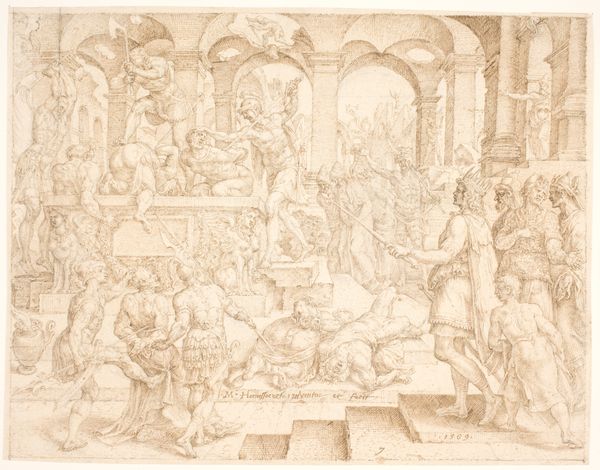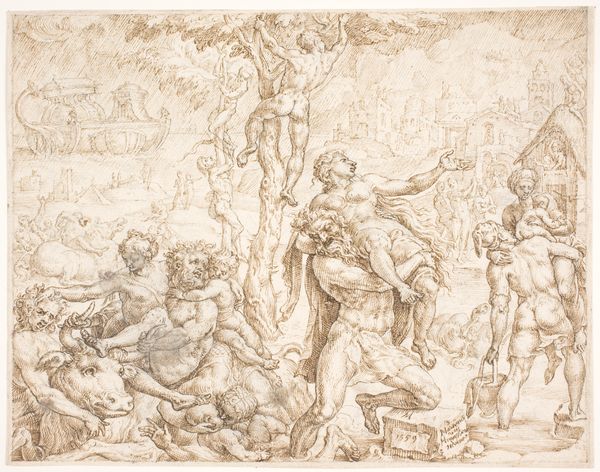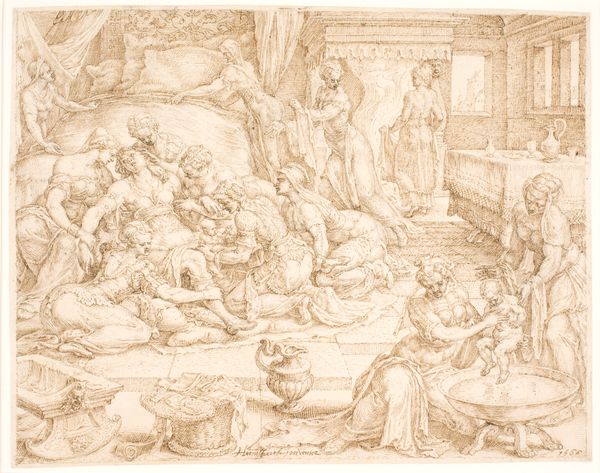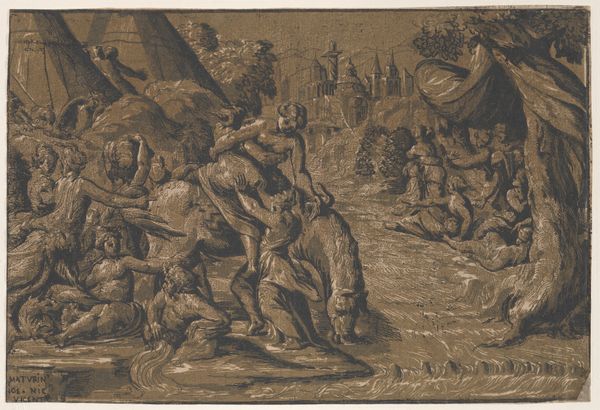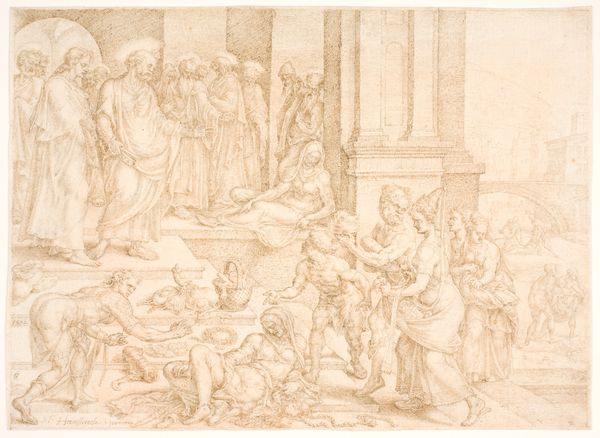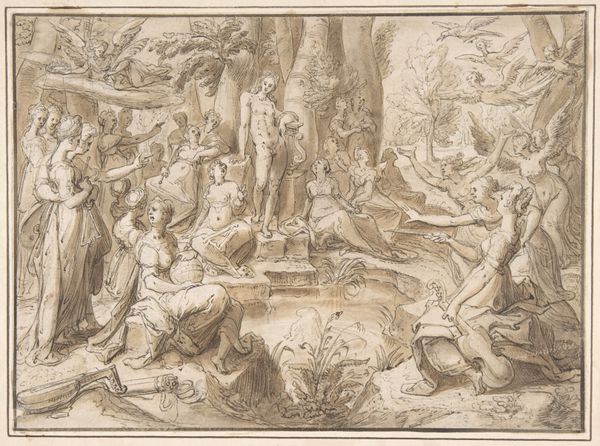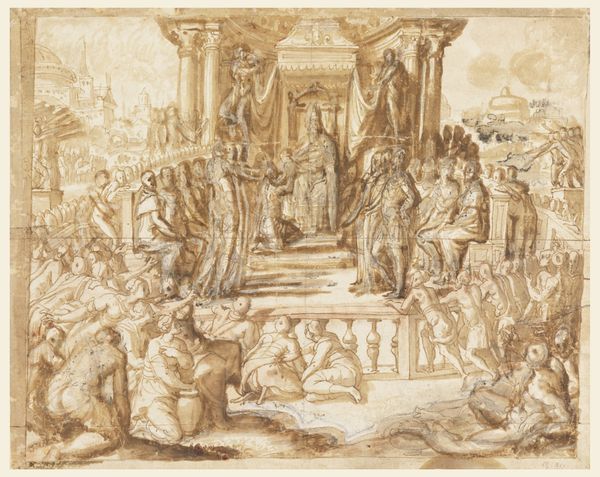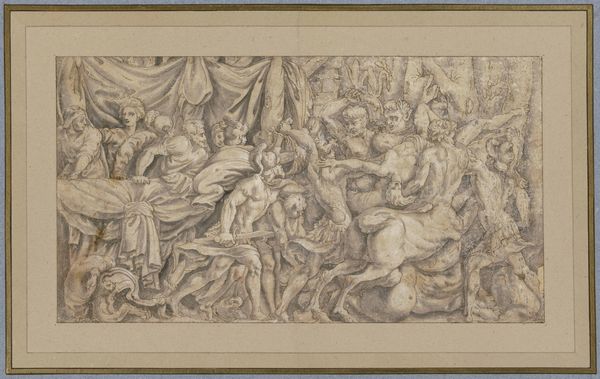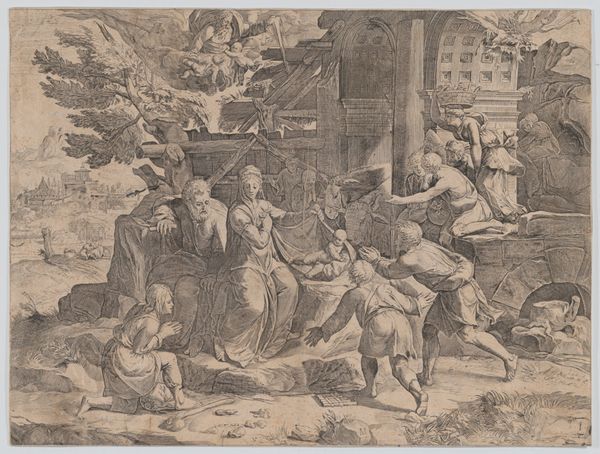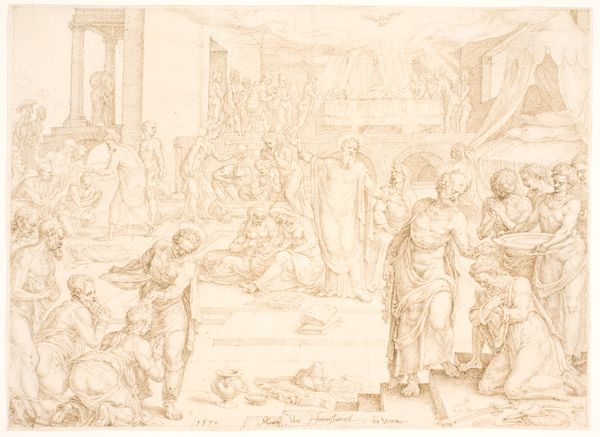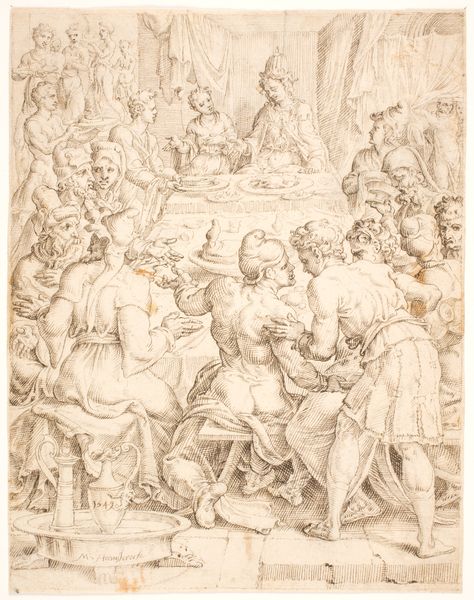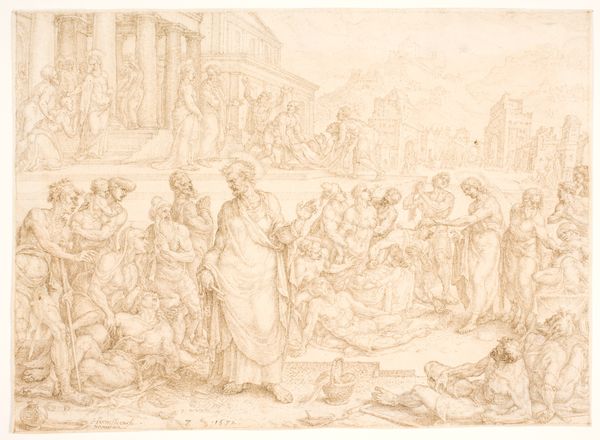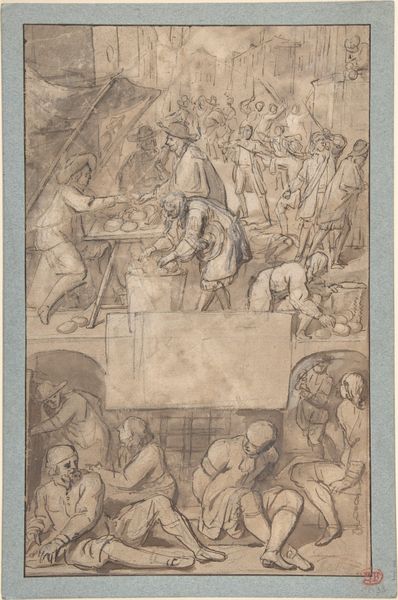
drawing
#
drawing
#
mannerism
#
figuration
#
11_renaissance
#
history-painting
Dimensions: overall: 30.4 x 47.4 cm (11 15/16 x 18 11/16 in.)
Copyright: National Gallery of Art: CC0 1.0
Editor: This drawing, "The Banquet of Acheloüs" by Luca Penni, from around 1545, really strikes me as a blend of elegance and almost unsettling dynamism. The figures are graceful, but their poses feel… theatrical. What do you see in this piece that informs its context and our own reading of it? Curator: What I see is a meticulously staged drama, reflecting the Mannerist style. Penni, like many artists of his time, uses mythology not just as a subject, but as a platform to comment on power, gender, and societal expectations. Consider the myth itself: the power dynamics of gods and mortals, the violence inherent in these narratives, and how those play out on women’s bodies. Who is invited to the table, and who is serving? Editor: That’s interesting, the power dynamic you mention, because it almost seems like the figures serving are also… incorporated into the scene, like part of the spectacle? Curator: Exactly! There's an almost voyeuristic quality. These banquets, depicted frequently in Renaissance art, become sites of negotiation – a stage for displaying wealth and, indeed, patriarchal dominance. Think about whose gaze is privileged here; who is objectified. The women depicted become trophies, don't they? Serving at this banquet they have very limited autonomy in this space, almost ornamental. And that intersects with class and access to power structures even today. Editor: So, beyond just illustrating a myth, Penni is engaging in a social commentary, albeit perhaps unconsciously from our modern viewpoint. I mean the lack of female empowerment on show is something hard to not see with modern eyes. Curator: Absolutely. And art like this pushes us to consider our own perspectives. Whose stories are being told, whose voices are missing and how might we, as viewers, engage with historical art to advocate for a more equitable and nuanced interpretation? This Banquet asks as many questions as it answers! Editor: I never thought about approaching art from this period in such a sociopolitical way. It adds so many more layers to consider!
Comments
No comments
Be the first to comment and join the conversation on the ultimate creative platform.
